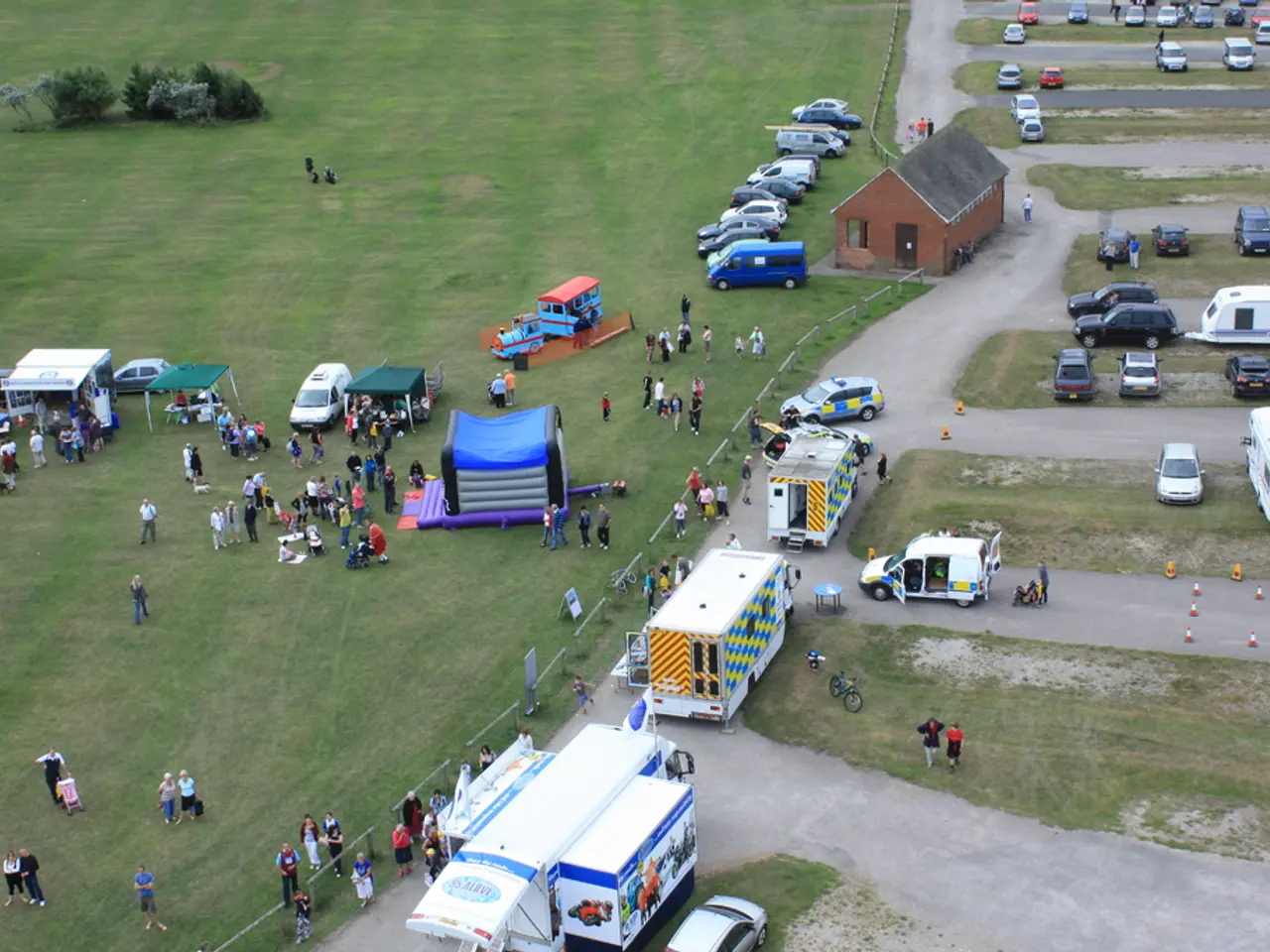Guide to Off-Grid Camping: No-Cost Outdoor Stay in America
Discovering the Freedom of Dispersed Camping in the United States
Dispersed camping, also known as free camping, pirate camping, boondocking, or roughing it, offers an exciting and unique way to explore the great outdoors. This form of camping allows you to experience the wilderness away from the confines of designated campgrounds. Here's a guide to help you navigate the world of dispersed camping in the United States.
Where to Camp
Primarily, dispersed camping takes place on public lands managed by government agencies such as the U.S. Forest Service (National Forests) or the Bureau of Land Management (BLM). You can camp for free without reservations in most areas, provided you follow local rules such as maximum stay limits (generally 14-16 days), camp at least 150 feet from water sources, and respect fire restrictions and other posted regulations.
Key Legal Guidelines
- Camp only on designated public lands where dispersed camping is allowed (National Forests and BLM lands are the most common).
- Adhere to stay duration limits: generally 14 days on BLM lands and 16 days on National Forest Service lands.
- Move your campsite the required distance after the stay limit (5 miles for National Forests, 25 miles for BLM).
- Camp at least 150 feet away from streams, lakes, or other water sources to protect water quality.
- No amenities are provided: be self-contained with your own water and waste disposal; pack out all trash.
- Check local restrictions by contacting the nearest ranger district or field office, as rules and closures may vary and change frequently.
- Permits may be required for large groups (over 75 people) or in special cases.
- Practice Leave No Trace principles and follow fire safety regulations to avoid legal issues and protect natural resources.
Finding Dispersed Camping Sites
Online resources and apps like The DyrtPRO, Sēkr, boondocking.org, Campendium.com, freecampsites.net, and iOverlander can help you find dispersed camping sites. Additionally, asking a BLM Ranger for suggestions is always a good idea. Scouring Google Maps for green areas indicating public lands can also be beneficial.
Safety and Preparation
Be bear aware and store food and scented items properly if in bear country. Bring plenty of water or have a way to treat water from natural sources. Check for any signs that may prohibit overnight parking. Be aware of fire restrictions and only have campfires or open stoves if permitted. It's crucial to be prepared with a good atlas, GPS, and check the weather before dispersed camping.
Regulations in Canada
If you're planning a trip to Canada, dispersed camping regulations are different there, so be sure to check out our Guide to Dispersed Camping in Canada.
Challenges on the East Coast
Dispersed camping can be more difficult to find on the East Coast compared to the West. In such cases, if all else fails, find a Walmart or truck stop for free camping.
Enjoying the Experience
Dispersed campsites offer few amenities like toilets, showers, adjacent restaurants, etc. What you do get in lieu of these luxuries are very few neighbors, a canopy of stars, the wind in the trees, and the satisfaction of knowing you've finally made it off the beaten track.
Final Thoughts
To legally practice dispersed camping in the United States, you must camp temporarily in designated public lands like National Forests or BLM areas, following specific agency rules on duration, location, and conduct, and ensuring you have proper knowledge of local regulations and restrictions. Permanent residence or building structures on these lands is prohibited.
Always check with a ranger to confirm which areas are and are not legal when you arrive. Dispersed camping is free and does not require reservations beforehand. Simply find a suitable spot and set up camp. While camping fees may apply in some areas, they are usually minimal. Campervans are perfect for dispersed camping due to their ability to fit into standard tent sites, navigate side roads, and find free dispersed camping almost anywhere.
[1] U.S. Forest Service [2] Bureau of Land Management [3] The Dyrt [4] Boondockers Welcome [5] Campendium
- During a road trip across the United States, consider trying dispersed camping in National Forests and Bureau of Land Management areas for an outdoor living experience away fromzoicious campgrounds.
- To find dispersed camping sites, utilize apps like The Dyrt, Sēkr, boondocking.org, Campendium.com, freecampsites.net, and iOverlander, or ask a BLM Ranger for suggestions.
- Adhere to legal guidelines such as camping only on designated public lands, following stay duration limits, and camping at least 150 feet away from water sources.
- For a unique lifestyle change, embrace the freedom and simplicity of van life while enjoying the great outdoors through widespread dispersed camping.
- Campervans are ideal for dispersed camping due to their ability to fit into standard tent sites, navigate side roads, and find free dispersed camping almost anywhere, making them perfect for outdoor-living enthusiasts.




